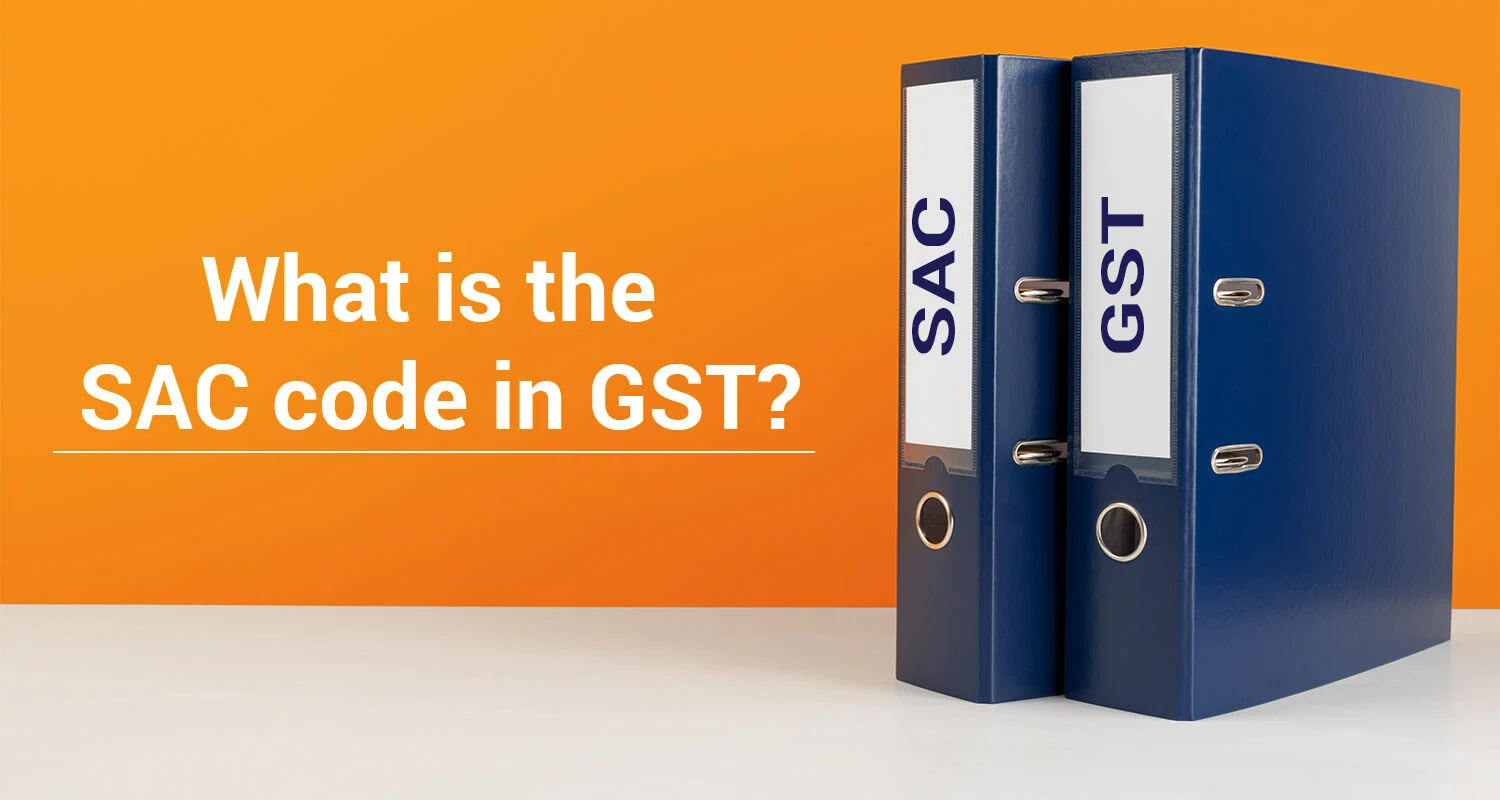What is the SAC Code in GST

The Goods and Services Tax (GST) revolutionized the Indian tax system, introducing a standardized framework for classifying both goods and services. While HSN codes categorize goods, SAC codes play an important role in classifying services under the GST regime. This article dives into the world of SAC codes, exploring their purpose, benefits, and their function within the GST system.
What is the SAC code in GST?
A Service Accounting Code, which is the full form of SAC is a unique six-digit numerical code assigned to various services rendered under the GST regime. It acts as a standardized identifier for classifying and tracking different types of services for tax purposes.
What is the SAC Number?
- The first two digits ("99") are common to all SAC codes, signifying that they belong to the "services" category within the GST system.
- The remaining four digits further categorize the service based on its specific nature. For instance, the SAC code "997211" represents "renting of immovable property with services."
Understanding HSN and SAC Codes in GST:
Within the Indian Goods and Services Tax (GST) system, two distinct code systems are employed for classifying goods and services:
- HSN Code (Harmonized System Nomenclature Code): Applicable to goods, HSN codes are based on the World Customs Organization's (WCO) internationally recognized system for classifying goods. This ensures uniformity in classifying goods across countries.
- SAC in GST: Designed specifically for services, SAC codes are based on the United Nations Central Product Classification (UNCPC) system. However, the Central Board of Indirect Tax and Customs (CBIC) has adapted it to the Indian context, including modifications recommended by a dedicated committee.
Sapna aapka. Business Loan Humara.
Apply NowKey Points about SAC Codes:
- Tax Rates: SAC codes are linked to specific GST tax rates. Knowing the correct SAC code ensures applying the appropriate tax rate for a service.
- GST Returns: Businesses must include SAC codes in their GST returns, providing detailed information about services rendered and the corresponding tax liability.
- Input Tax Credit (ITC) Claims: SAC codes are essential for claiming input tax credit on purchases related to the services provided.
Taxation of Services under GST:
- Services under GST are categorized into five tax slabs: 0%, 5%, 12%, 18%, and 28%.
- Services not listed or assigned an SAC code are subject to an 18% GST rate by default.
Features of SAC Codes:
- Standardization: SAC codes ensure uniformity in classifying services across the nation, facilitating efficient tax administration and compliance.
- Specificity: The six-digit structure allows for granular categorization of services, enabling accurate tax application based on their specific nature.
- Transparency: SAC codes enhance transparency in tax invoices and returns, promoting better record-keeping and audit trails.
Benefits of SAC Codes:
- Simplified Tax Compliance: SAC codes simplify the process of identifying the applicable GST rate for a specific service, reducing errors and streamlining tax calculations.
- Improved Data Analysis: Standardized SAC codes enable the government to collect and analyze data on various service sectors, aiding in policy formulation and economic monitoring.
- Enhanced Transparency: Using SAC codes on invoices and returns increases transparency in business transactions, promoting trust and accountability.
Types of SAC Codes:
SAC codes encompass a wide range of services offered across diverse sectors. They are broadly categorized into the following groups:
- 99xx - Services provided to businesses: This category includes services like legal services, accounting services, marketing services, etc.
- 99xx - Services provided to individuals: This category covers services like transportation services, education services, healthcare services, etc.
- 99xx - Other services: This category includes miscellaneous services not falling under the above categories.
The specific SAC codes for various services can be found on the official GST website or through online resources provided by tax authorities.
How it Works?
SAC codes play a crucial role in the GST system by:
- Determining Tax Rates: The applicable GST rate for a service is often linked to its specific SAC code. This ensures that the correct tax amount is levied and collected.
- Filing GST Returns: Businesses are required to mention SAC codes while filing their GST returns, providing detailed information about the services rendered and the corresponding tax liability.
- Input Tax Credit (ITC) Claims: SAC codes are essential for claiming input tax credit on purchases related to the services provided. This helps businesses reduce their overall tax burden.
Conclusion
SAC codes are an integral part of the GST framework, serving as a vital tool for efficient tax administration, accurate tax calculation, and enhanced transparency. By understanding the structure and functionalities of SAC codes, businesses and individuals can ensure accurate compliance with the GST regulations.
FAQs
Q1. What is a SAC code in GST?
Ans. SAC code, or Service Accounting Code, is a unique six-digit number used to classify services under the Goods and Services Tax (GST) regime in India. It helps identify the specific nature of a service and determine the applicable GST rate.
Q2. Why are SAC codes important?
Ans. SAC codes play a crucial role in the smooth functioning of the GST system. They ensure accurate tax application by linking different services to specific GST rates. This simplifies compliance, as businesses are required to mention SAC codes on invoices and GSTR returns, promoting transparency and facilitating efficient record-keeping.
Q3. How many SAC digits are required on invoices and GSTR-1?
Ans. The number of SAC digits required depends on your annual turnover and the type of transaction. For businesses with an annual turnover exceeding Rs. 5 crore, all six SAC digits are mandatory for invoices and GSTR-1 filing. For businesses with a turnover below Rs. 5 crore, four digits are mandatory for registered B2B transactions, while four digits are optional for B2C and composition dealers.
Q4. What are the consequences of not using SAC codes correctly?
Ans. Non-compliance with SAC code requirements can lead to penalties under the GST Act, ranging from Rs. 25,000 to Rs. 50,000 depending on the specific violation.
Sapna aapka. Business Loan Humara.
Apply NowDisclaimer : The information in this blog is for general purposes only and may change without notice. It does not constitute legal, tax, or financial advice. Readers should seek professional guidance and make decisions at their own discretion. IIFL Finance is not liable for any reliance on this content. Read more



